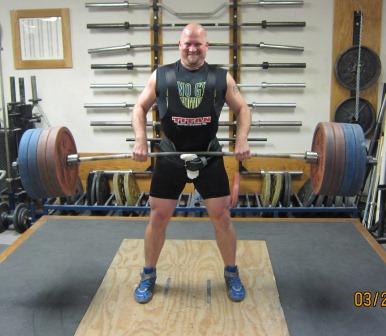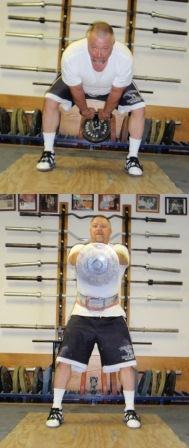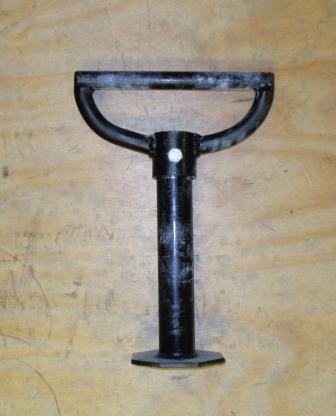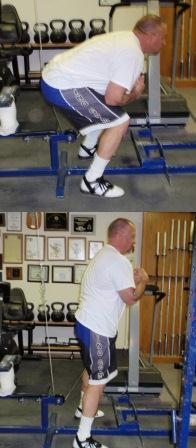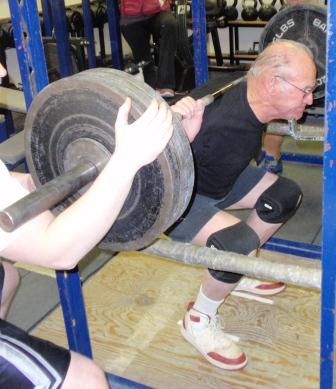by Al Myers
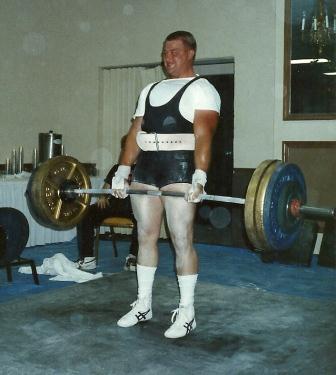
This is a photo of myself in a powerlifting meet when I first started competing, when I was 20 years old. If only I knew the things then that I know now!
A while back I was discussing with Dave Glasgow everything we have learned “the hard way” during our long lifting careers, and how we both wish we knew THEN what we know NOW. The lifters nowadays have much more training information “at their fingertips” by the volumes upon volumes of training wisdom found on the internet (not saying it is all good info, but there is alot of good information). Back in my early training days the only source of training information was from other lifters and the most recent edition of Muscle and Fitness that I read in the store off the rack. Eventually I was able to afford a subscription to Powerlifting USA so my learning curve expanded. I want to make these “notes to myself” just in case somehow, by a modern day miracle, I am transformed back into the mind and body of my early 20’s.
1. STICK TO THE BASIC MUSCLE BUILDING EXERCISES
I remember when I was a young lifter I often got “sidetracked” with unproductive training programs (usually out of the latest issue of M&F!). I kept looking for the ultimate program and truly believed there was one. I would “jump around” from training program to training program. Now I know there’s not a “secret training program” – many programs can be very successful and there is not a single program that is always better than the rest. Looking back, I realize now that most of my strength gains came from the most basic of exercises – squats, presses, and deadlifts.
2. STAY CONSISTENT IN YOUR TRAINING
The most important thing a young lifter can do is to stay consistent in their training. This means lifting year round, and not taking extended breaks. I know when I was young I would often lose focus on my training, and participate in other non strength activities for long periods of time. I also took alot of things for granted – and just assumed that I wouldn’t lose the strength I built up while taking time off for a couple of months to play slow pitch softball during the summer.
3. MAINTAIN ATHLETICISM AND FLEXIBILITY
When you are young you are at the peak of your athleticism. Try to maintain it for as long as you can because it will leave you eventually! One thing I’m very glad of was that I was introduced to the Highland Games right at the same time I started lifting weights. The Highland Games require a great deal of athleticism as several of the events require you be quick on your feet, and be able to move with weights in your hands. The combined training of weights and the games allowed me to keep my athleticism as I got stronger in the gym. I have seen several lifters spend so much time with their feet set solid in the squat rack under a set of squats that the ability to move the feet quick is lost. Also don’t take your flexibility for granted, because as you age this will soon disappear as well. Take the time to do your stretches.
4. EAT A HEALTHY DIET
Young lifters often eat the very worse of diets during the course of a weight training program. Fast food seems to be the norm when you are in college. I know now that my progress would have been better if only I would have spent a fraction of the time paying attention to my diet as I did to my training. Also, there are no secret supplements that will quarantee success in the gym. I have spent money I didn’t have on supplements that I was convinced would help me (remember the liver tablets???), when I should have been buying extra meat and milk instead.
5. LISTEN TO COACHES
Young lifters are the worse when it comes to listening to advice. Find a good mentor and listen to the coaching advice as it will pay off.
6. AVOID HIGH RISK ACTIVITIES
I just think of things I did when I was younger and I am just thankful none of them resulted in a major injury that would have sidelined my lifting career. I remember feeling when I was young that I was invincible and there was no way I could get hurt doing anything! Well, all it takes is a couple of serious injuries and you soon realize that the body is NOT invincible and any injury will set back your training!!! But I did enjoy that fast motorcycle in college.
7. COMPETE AS OFTEN AS POSSIBLE
This is an understatement. I have met several lifters through the years that didn’t compete, and when asked about it, would reply that they were waiting to get stronger before hitting a competition. I know now that more competitions makes you a better lifter as you learn from the competitions and it gives you a gauge of your progress. It also serves as a source of motivation. Plus if you are waiting to get stronger to compete – you will NEVER compete because you will never feel you are strong enough to do it.
(FINAL NOTE: I’m not delusional or senile yet so I know my chances of being transformed into a “younger self” will not happen, so I just hope these bits of wisdom somehow helps a new young lifter. )
